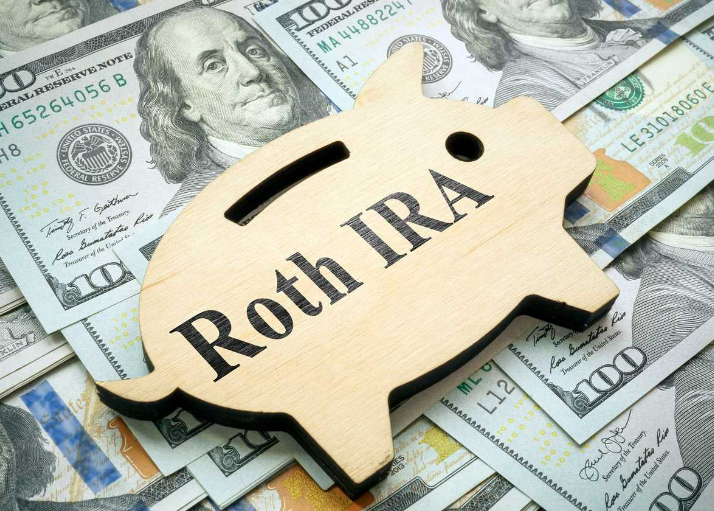All You Need to Know about Roth IRA


A Roth IRA is a highly favored retirement savings option, offering significant tax benefits, such as tax-free withdrawals in retirement. Many financial experts even regard the Roth IRA as one of the best retirement plans available.
This guide will explain how a Roth IRA works, its key advantages, and how it stacks up against a traditional IRA. If you’re already set on opening a Roth IRA, the process is simple and straightforward. You can also jump directly to a list of the best brokers for Roth IRAs to get started.
The Roth IRA offers big tax advantages
Like a traditional IRA, a Roth IRA allows individuals to save for retirement with tax advantages, but it offers a unique twist. With a Roth IRA, you contribute after-tax money, which grows over time, and you can withdraw it completely tax-free in retirement (after age 59 ½). That “tax-free forever” benefit is what catches attention, but the Roth IRA has even more to offer.
The tax-free withdrawals make it especially appealing if you plan to pass the account down to heirs, helping them avoid significant tax burdens. Plus, there’s no age limit for contributing, so you can keep investing in a Roth IRA throughout your life as long as you meet the income requirements.
Another perk is its flexibility. You can withdraw your contributions (but not earnings) at any time tax-free, since you’ve already paid taxes on that money—though experts generally advise against it. If you take out earnings early, you could face income taxes on the gains and a 10 percent penalty, unless it’s for certain qualifying expenses like education, which can exempt you from the penalty (but not the taxes).
Moreover, a Roth IRA allows you to invest in high-return options like stocks and stock funds, potentially growing your money much faster than a traditional savings account.
What are the other rules for the Roth IRA?
You can withdraw both your contributions and earnings tax-free in retirement, as long as you meet one key requirement: at least five years must have passed since your first Roth IRA contribution. This five-year rule is crucial to keep in mind, and it starts ticking on January 1 of the year you made your first deposit. That’s why it’s a good idea to open your Roth IRA sooner rather than later to ensure you’re fully prepared.
For 2024, the annual contribution limit for a Roth IRA is $7,000. If you’re 50 or older, you can make an additional catch-up contribution of $1,000 each year, allowing you to contribute up to $8,000 annually.
A Roth IRA is also a great option for rolling over funds from a Roth 401(k). You can transfer the money from your employer-sponsored plan into a Roth IRA held in a brokerage account, giving you more investment choices beyond the funds available in the 401(k). Generally, money rolled from a Roth 401(k) to a Roth IRA won’t trigger taxes, but any employer-matching contributions held in a traditional 401(k) will be subject to taxes if moved to a Roth IRA.
Who can open a Roth IRA?

Generally, anyone with earned income can contribute to a Roth IRA, up to the lesser of your earnings or the annual contribution limit. However, there’s an exception known as the spousal IRA. Even if your spouse doesn’t earn an income, you can both contribute to a Roth IRA, provided your combined contributions don’t exceed your total income for the year or the annual limit, whichever is lower.
Roth IRAs also have income limits that determine who can contribute directly, but there are ways to bypass those limits. For 2024, the income thresholds are as follows:
- For individual filers: You can contribute the full amount if your modified adjusted gross income (MAGI) is below $146,000. Contributions phase out between $146,000 and $161,000.
- For married couples filing jointly: You can contribute the maximum if your MAGI is under $230,000. Contributions phase out between $230,000 and $240,000.
If your income exceeds these limits, you can still take advantage of a Roth IRA by using a strategy called a “backdoor Roth IRA.” This involves contributing to a traditional IRA and then converting it to a Roth IRA.
Roth IRA vs. traditional IRA
The traditional IRA is another valuable retirement savings option, offering different tax benefits compared to a Roth IRA. With a traditional IRA, contributions are made with pre-tax dollars, meaning you get an immediate tax break on the money you contribute. However, when you withdraw funds in retirement (starting at age 59 ½), those withdrawals are taxed as regular income.
Traditional IRAs also have income limits that may prevent high earners from contributing pre-tax dollars. However, if you exceed these limits, you can still convert a traditional IRA to a Roth IRA and take advantage of the Roth’s tax-free growth. Keep in mind, traditional IRAs come with required minimum distributions (RMDs) once you reach retirement age, unlike Roth IRAs.
These are just a few of the key differences — here’s a full breakdown.
In Conclusion
The Roth IRA is a top choice for retirement savings, largely due to its ability to provide tax-free growth on earnings indefinitely. However, its advantages go beyond that — the Roth IRA also offers the benefit of no required minimum distributions (RMDs) and provides valuable estate-planning perks, making it an even more appealing option.